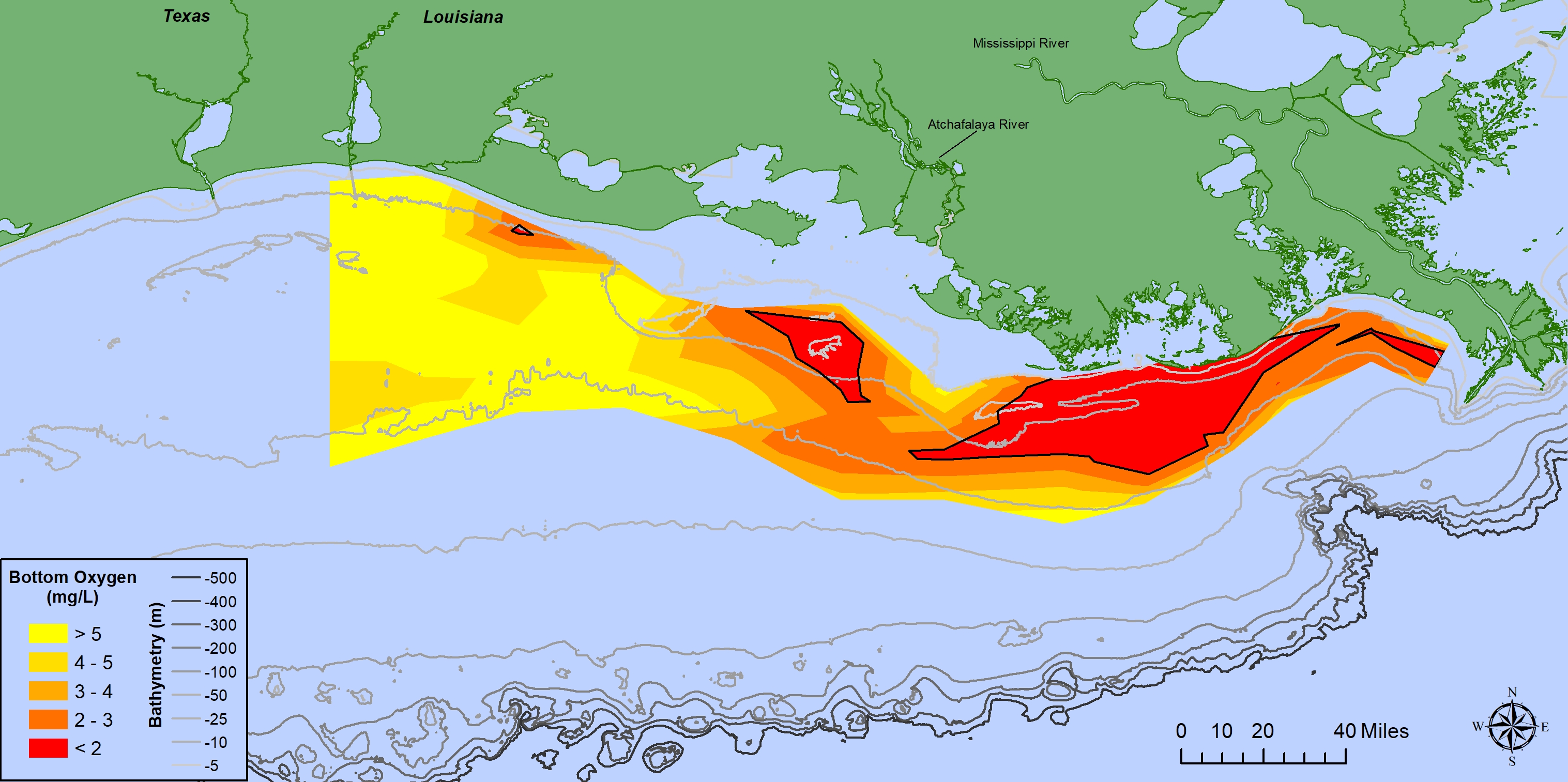NEWS AND EVENTS
Summer 2018 ‘dead zone’ in the Gulf of Mexico is smaller than average
local conditions likely disrupted a long-term trend
Scientists recently returned from their annual cruise to measure hypoxia in the northern Gulf of Mexico. An area of hypoxia, often called a ‘dead zone’, is where oxygen levels drop under a critical threshold below which marine life cannot survive.
From July 22 – 28, they mapped an area of low oxygen that was 2,720 square miles, about the size of Delaware and smaller than predicted. This is well below the 5,770 square mile average from 2014 – 2018 and only a third the size of the largest hypoxic zone ever measured, which was 8,776 square miles in July 2017.

Oxygen levels in the northern Gulf of Mexico as measured July 22 – 28, 2018. Black line encircles hypoxic zone with oxygen below 2 mg/L; too low to sustain marine life. Data and figure from Dr. Rabalais and Dr. Turner.
Researchers, led by Dr. Nancy Rabalais, Distinguished Research Professor at LUMCON and Professor and Shell Oil Endowed Chair at Louisiana State University, and Dr. R. Eugene Turner, Boyd Professor at Louisiana State University, predicted a 6,570 square mile dead zone this summer based on Mississippi River water quality this spring.
Dr. Rabalais says that a storm early in their trip stirred up the water, mixing oxygen back into areas that could have been hypoxic before they began taking measurements. In addition, sustained winds from the west may have pushed low-oxygen water to the east, condensing the size of the zone before they arrived.
Dr. Rabalais cautions that “Although the area is small this year, we should not think that the low-oxygen problem in the Gulf of Mexico is solved. We are not close to the goal size for this hypoxic area and continued efforts at nutrient mitigation are needed.” This year’s hypoxic zone is almost 50% larger than the Mississippi River Nutrient/Hypoxia Task Force’s goal of 1,930 square miles.
This is Dr. Rabalais’s 32nd summer trip to measure oxygen in the northern Gulf of Mexico. The three-decade average size of the Gulf of Mexico low-oxygen zone is 5,375 square miles, making it the second-largest recurring hypoxic zone in the world.
In the northern Gulf of Mexico, hypoxia occurs when oxygen levels are less than 2 mg/L (or 2 parts per million). Mobile animals like fish and shrimp leave hypoxic waters, which disrupts fisheries. Organisms like mussels and crabs that are not mobile or cannot move quickly will die within a low-oxygen area, affecting their abundances and the food supply for more mobile animals.
The Mississippi River accumulates nutrients as it drains approximately 41 percent of the contiguous United States, mainly through excess fertilizers washed into the river. These nutrients fertilize the Gulf of Mexico when river water discharges into the ocean, which stimulates microscopic floating plants, or phytoplankton, to grow. As the plants in these unusually large blooms die, they sink to the bottom and decompose, a process which uses up oxygen in the surrounding water.
For more cruise details and information on past hypoxia cruises, visit https://gulfhypoxia.net.
